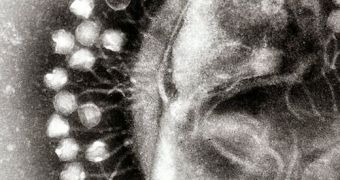Viruses have been used to modify the traits of various genes for some time now, mostly because of the fact that they have the capacity to rewrite entire portions of the DNA strand of the host, basically triggering the expression of genes that would otherwise remain dormant. Thus far, a cocktail of four viruses was used for this task, but this meant that human usage was restricted.
Unlike simpler organisms, the human body is very susceptible to change in its genome. The viral cocktail was banned from human testing because of its high cancerous potential. Because the pathogens acted at the very core of the DNA strand, they could have inadvertently triggered the expression of genes regularly associated with cancer (oncogenes). This effect meant that no doctor could be sure that injecting the substances into a patient's body would not result in a multiple, fast-progressing and lethal cancer.
The main goal of these experiments is to turn regular adult cells into stem-like cells that can later be used to cure such diseases as Parkinson's and diabetes, which currently affect tens of millions worldwide. Now, researchers at the Whitehead Institute, in Cambridge, Massachusetts, believe they may have discovered a way to surpass this problem. They managed to reduce the cocktail to a single virus, meaning that the chances of unwillingly triggering cancer are now much slimmer.
A polycistronic virus – capable of rewriting DNA information – was reprogrammed by MIT graduate student Bryce Carey to express all the traits of the previous four viruses. Because the new agent works in stages, behaving like all the other four triggers in the same manner, its action can be combined with gene targeting, the experts in the team say.
Rudolf Jaenisch, a Whitehead Member who made his laboratory available for Carey's research, concludes that "This is an extremely useful tool for studying the mechanisms of reprogramming. Using this one virus creates a single integration in the cells' DNA, which makes things much easier to handle."

 14 DAY TRIAL //
14 DAY TRIAL //